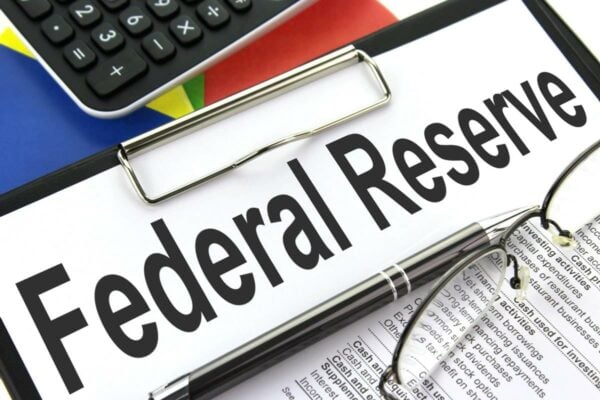
President Trump enjoyed his 102nd stock market record last week.
Then Fed Chairman Jerome Powell raised the interests rates AGAIN under President Trump.
Now the Dow Jones is down 1500 1,743 1,501 points in the last week.

President Trump said the “Fed is crazy.” He’s right.
Trump has been saying for the past year, with Stocks at all-time highs and unemployment at 50-year lows, the Fed’s interest rate increases show a far-left liberal bias.
Right after Barack Obama was elected President, on December 16, 2008, the Federal Reserve (The Fed) lowered the Fed Funds rate by an entire percent, from 1% down to 0% .
The Fed had not lowered the Fed Funds rate by such a large amount (1% ) since at least before 1990, if ever. The Fed kept this 0% rate for most of Obama’s eight years in office.

CNBC reported in December 2015 that President Obama oversaw “seven years of the most accommodative monetary policy in U.S. history” (from the Fed). The Fed Funds rate was at zero for most of Obama’s time in office. Finally, in December 2015 after the Fed announced its first increase in the Fed Funds rate during the Obama Presidency.
The only Fed Funds Rate increases since 2015 were after President Trump was elected President. The Fed increased the Fed Funds Rate now seven times.

The Fed Funds Rate greatly impacts the economy:
Lower interest rates usually spur the economy by making corporate and consumer borrowing easier. Higher interest rates are intended to slow down the economy by making borrowing harder.
Increases in the Fed Funds Rate increase the cost of borrowing and the largest borrower in the world is the US government. With $20 trillion in debt, a 2% increase in interest payments equals $400 billion in annual interest payment increases or nearly a half a trillion dollars!
When interest rates go up the real estate market is hurt the most.
Higher rates puts pressure on sellers and buyers.
And Wells just reported its worst mortgage number since the 2008 crisis.
Wells Just Reported The Worst Mortgage Number Since The Financial Crisis https://t.co/HXRo75pJiM
— zerohedge (@zerohedge) October 12, 2018
According to Zero Hedge:
When we reported Wells Fargo’s Q1 earnings back in April, we drew readers’ attention to one specific line of business, the one we dubbed the bank’s “bread and butter”, namely mortgage lending, and which as we then reported was “the biggest alarm” because “as a result of rising rates, Wells’ residential mortgage applications and pipelines both tumbled, sliding just shy of the post-crisis lows recorded in late 2013.
Then, a quarter ago a glimmer of hope emerged for the America’s largest traditional mortgage lender (which has since lost the top spot to alternative mortgage originators), as both mortgage applications and the pipeline posted a surprising, if welcome to bulls, rebound.
However, it was not meant to last, because buried deep in its presentation accompanying otherwise unremarkable Q3 results (modest EPS and revenue beats), Wells just reported that its ‘bread and butter’ is once again missing, and in Q3 2018 the amount in the all-important Wells Fargo Mortgage Application pipeline shrank again, dropping to $22 billion, the lowest level since the financial crisis.
Yet while the mortgage pipeline has not been worse in a decade despite the so-called recovery, at least it has bottomed. What was more troubling is that it was Wells’ actual mortgage applications, a forward-looking indicator on the state of the broader housing market and how it is impacted by rising rates, that was even more dire, slumping from $67BN in Q2 to $57BN in Q3, down 22% Y/Y and the the lowest since the financial crisis (incidentally, a topic we covered recently in “Mortgage Refis Tumble To Lowest Since The Financial Crisis, Leaving Banks Scrambling”).
Powell raised rates last week to slow down the Trump boom. This put added stress on the real estate market.
Now the market is down 1,500 points in a week.
So was this a purposeful hit on Trump and America?
The post FED JUST SCREWED TRUMP & AMERICA: Raising Rates Hurts Real Estate Most — Which Just Had Its Worst Number Since Financial Crisis appeared first on The Gateway Pundit.